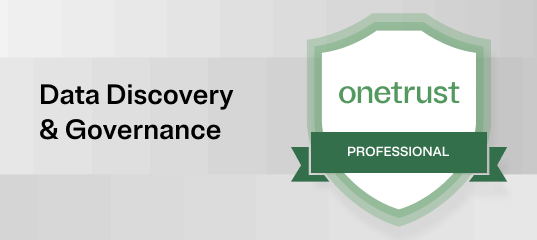Blog
How to build your UK net zero transition plan
Follow the recommendations and standards in the Transition Plan Taskforce Disclosure Framework to drive consistency, trust, and transparency
Christine Alhambra
Head of ESG Initiatives
February 15, 2024

At the latest United Nations Climate Change Conference (COP28), participating parties reached a wide-ranging agreement that calls for ambitious climate action before the end of the decade. Among the targets in the agreement are tripling worldwide renewable energy capacity and accelerating the transition away from fossil fuels. In his closing speech, UN Climate Change Executive Secretary Simon Stiell called the agreement “the beginning of the end” of the fossil fuel era.
Businesses must become active participants in this shift or risk getting left behind. The first step is to develop a net zero transition strategy that outlines a specific plan of action while also ensuring transparency and credibility. In the past, there has been a lack of consistency around how enterprises track and disclose their net zero progress. To address this problem in the UK, HM Treasury established the Transition Plan Taskforce (TPT) in 2022 to develop a new disclosure framework for net zero transition plans.
Request a demo of OneTrust ESG and Sustainability Cloud
How will the TPT Disclosure Framework impact UK net zero transition plans?
The new framework aims to guard against greenwashing by establishing a gold standard for quality, consistency, and level of detail in net zero transition plans. It applies to all UK listed companies and financial firms.
The initial draft of the TPT Disclosure Framework was released for consultation in November 2022. Following extensive engagement and feedback, the final version of the framework was published in October 2023. The TPT has also published extensive Implementation Guidance to help businesses better understand the framework and how it will impact reporting requirements going forward. The Implementation Guidance is currently in draft phase, with the final version expected to be published during Q1 2024.
The TPT recommends that businesses disclose their standalone transition plans at least once every three years, or any time they make significant changes to their plan. Businesses should also include material information about their transition plan as part of their general-purpose financial reporting. This means they may need to report their progress toward quantified, time-bound metrics and targets.
Who created the TPT Disclosure Framework? How does it align with other ESG reporting standards?
Representatives from across industry, academia, government, and civil society organizations participated in creating the framework. The framework aligns with and builds upon standards and recommendations previously established by the Task Force on Climate-Related Financial Disclosures (TFCD), the Glasgow Financial Alliance for Net Zero (GFANZ), and the International Sustainability Standards Board (ISSB).
Businesses that prepare a long-form TCFD or other sustainability report should include their net zero transition plan alongside it. The transition plan should be clearly separable from the sustainability report, either as an appendix or a separate document.
Within the UK, the Financial Conduct Authority (FCA) is expected to draw from the framework as it strengthens its expectations for transition plan disclosures over the next several years. New reporting requirements based on the framework are anticipated to take effect starting with January 2025 accounting periods. This means the first reporting will take place in 2026.
What principles and recommendations are included in the TPT Disclosure Framework?
The TPT Disclosure Framework is based on the principles of Ambition, Action, and Accountability. These principles align to five main disclosure elements, which in turn align to various sub-elements:
- Foundations
- Implementation Strategy
- Engagement Strategy
- Metrics & Targets
- Governance
Foundations: What will your net zero transition plan accomplish, and how?
Any strategic plan that lacks a strong foundation is doomed to fail, and net zero transition plans are no exception. The foundation for your plan should establish a clear strategic ambition — your objectives and priorities for pursuing a net zero transition in the first place. As the name suggests, all other elements of your transition plan will build upon your foundation, so it’s important to take the time to get it right.
Your foundation should also account for how your strategic ambition could impact your business model and value chain, both immediately and into the future. Finally, you should lay out any key assumptions you’re basing your plan on, as well as external factors that could impact your ability to achieve your strategic ambition.
Implementation Strategy: What specific actions will you take to enable your net zero transition?
Once you’ve established the “why” of your transition plan, it’s time to look at the “how.” This means the actions you’ll take to make your transition happen. Your implementation strategy should touch on how you’ll adjust your business operations — over the short term and long term — to achieve your strategic ambition. It should also include information about changes you’ll make to your portfolio of products and services, and any new policies or conditions you may need to introduce to achieve your goals.
The final component of your implementation strategy should include information about how your transition plan will impact your financial position, financial performance, and cash flow.
Engagement Strategy: Who do you need to work with to ensure a successful net zero transition plan?
In today’s connected global economy, no business ever succeeds alone, and that’s certainly true when it comes to transitioning to net zero. Your engagement strategy should identify all the outside entities you’ll need to work with to achieve your strategic ambition and describe how you’ll engage with those entities. You should incorporate your value chain (your suppliers and customers), counterparts in the industry (your peers, industry associations, and membership bodies), and public sector organizations (government agencies, regulators, and community organizations). Each of these entities will play some role in enabling your net zero transition. For this reason, it’s essential that you engage with all of them to ensure they understand what you need from them. It will also be helpful for you and your partners to identify opportunities to collaborate or share best practices as you pursue your respective ESG goals.
Metrics & Targets: How can you determine if your net zero transition is progressing?
As you pursue the strategic ambition laid out in the foundation of your plan, you need to set meaningful targets that align to those goals. Then, you need to track relevant metrics that show your progress toward those targets. The metrics and targets used to evaluate your net zero transition fall under the principle of accountability; they help you understand and disclose how your transition is impacting your stakeholders, the environment, the economy, and society as a whole.
Your business should track and disclose targets and metrics related to governance, engagement, and business operations. You may also include financial metrics and targets that show how your transition impacts your revenues, capital expenditures, and R&D investments. And of course, you should include metrics and targets related to greenhouse gas (GHG) emissions and removals. Your stakeholders will also want to know how much of your decarbonization progress is attributable to carbon credits, as opposed to direct abatement. You should include specific information about the amount of carbon credits you’re using and how you acquire them.
Governance: Who’s responsible for your net zero transition plan?
As with any other aspect of corporate strategy, having clearly defined roles and responsibilities is essential to the success of your net zero transition plan. You’ll want to clearly document how your net zero transition plan is embedded into your existing governance structures. This would include defining the role of the board of directors in overseeing your transition plan and outlining the responsibilities and accountability mechanisms assigned to senior executives.
You’ll also want to disclose how your transition will align to your company culture and people strategy and outline any incentives you’re offering to help inspire action. Finally, you’ll want to list any skills or knowledge your leadership may need in order to execute the plan, and specify the training you’ll offer to help them acquire it.
How can OneTrust help?
As you plan your ESG reporting strategy, you have much to consider, and the recommendations and standards laid out in the TPT Disclosure Framework only add to the list. You must also consider how the new framework could contribute to additional reporting requirements in the future, and how to align to the framework while also following international ESG reporting standards. It’s a lot for any organization to keep up with, and it will only grow more complex going forward.
The OneTrust ESG and Sustainability Cloud can help simplify reporting requirements by defining your sustainability metrics, tracking your progress, and automating reporting. Request a demo of this powerful solution today to learn how you can build trust with your key stakeholders by demonstrating a positive impact on people and the planet.
You may also like

Webinar
ESG Program Management
The intersection of ESG & GRC: A fireside chat
Join our team of experts for a fireside chat webinar on ESG and how it works with risk, third party management and more.
June 21, 2023

Webinar
ESG & Sustainability
Moving beyond metrics
In this session, we’ll cover leveraging technology to accelerate your ESG program and bring scale to your mission to have the highest potential impact.
September 12, 2022

Webinar
ESG Program Management
CSRD Masterclass: Your guide to prepare for 2024 reporting
Watch our CSRD Masterclass series where we dove into the Corporate Sustainability Directive, how it fits into the EU Taxonomy and the Green New deal, and how you can prepare for your 2024 reporting.







